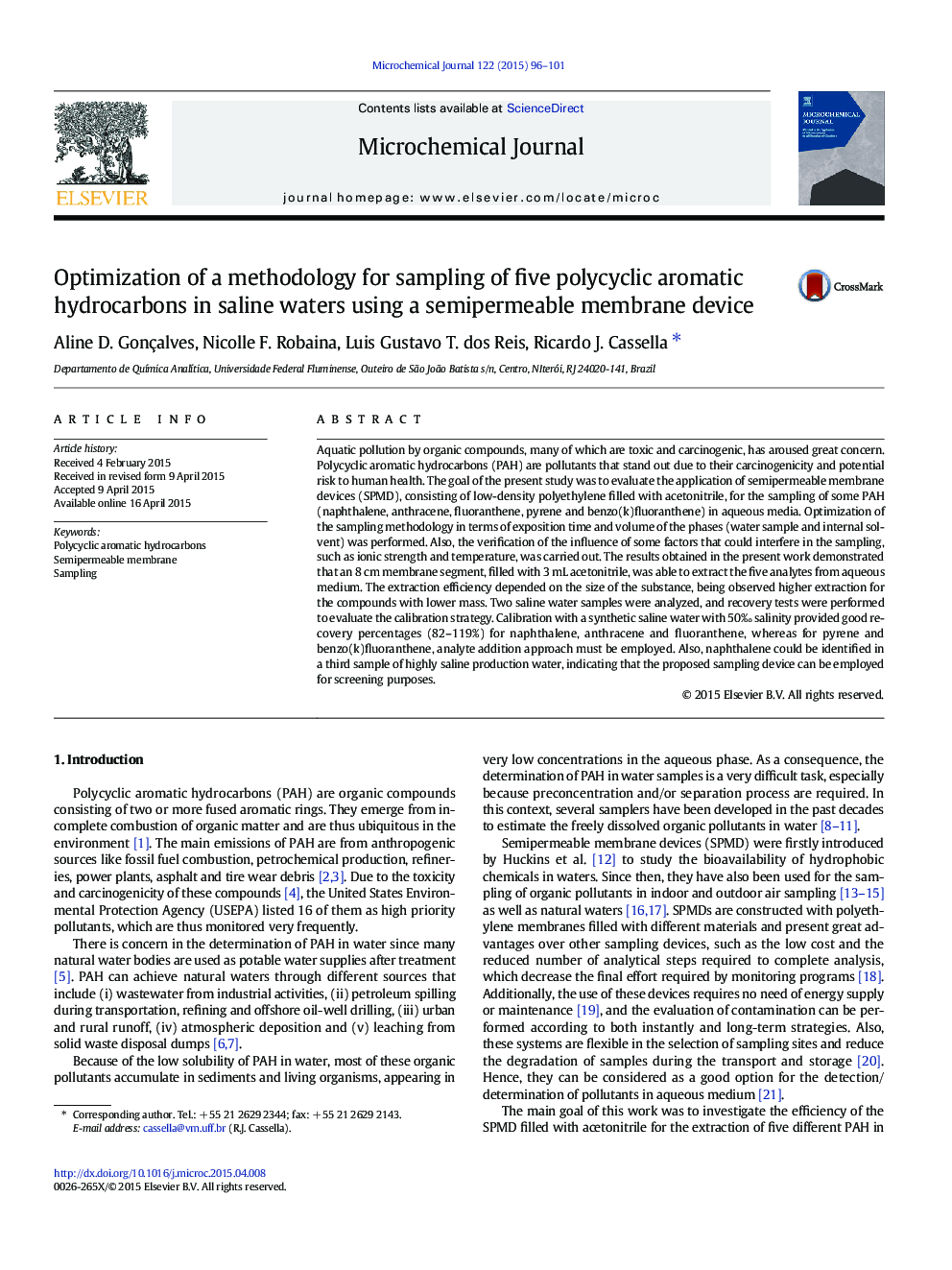| Article ID | Journal | Published Year | Pages | File Type |
|---|---|---|---|---|
| 1227766 | Microchemical Journal | 2015 | 6 Pages |
•A sampling device was developed for sampling PAH from saline waters.•Acetonitrile was tested as collection phase inside the semipermeable membrane device.•The PAH were determined in the extracts by HPLC with UV detection.•Five PAH were tested and benzo(k)fluoranthene presented the lowest transference percentage.
Aquatic pollution by organic compounds, many of which are toxic and carcinogenic, has aroused great concern. Polycyclic aromatic hydrocarbons (PAH) are pollutants that stand out due to their carcinogenicity and potential risk to human health. The goal of the present study was to evaluate the application of semipermeable membrane devices (SPMD), consisting of low-density polyethylene filled with acetonitrile, for the sampling of some PAH (naphthalene, anthracene, fluoranthene, pyrene and benzo(k)fluoranthene) in aqueous media. Optimization of the sampling methodology in terms of exposition time and volume of the phases (water sample and internal solvent) was performed. Also, the verification of the influence of some factors that could interfere in the sampling, such as ionic strength and temperature, was carried out. The results obtained in the present work demonstrated that an 8 cm membrane segment, filled with 3 mL acetonitrile, was able to extract the five analytes from aqueous medium. The extraction efficiency depended on the size of the substance, being observed higher extraction for the compounds with lower mass. Two saline water samples were analyzed, and recovery tests were performed to evaluate the calibration strategy. Calibration with a synthetic saline water with 50‰ salinity provided good recovery percentages (82–119%) for naphthalene, anthracene and fluoranthene, whereas for pyrene and benzo(k)fluoranthene, analyte addition approach must be employed. Also, naphthalene could be identified in a third sample of highly saline production water, indicating that the proposed sampling device can be employed for screening purposes.
